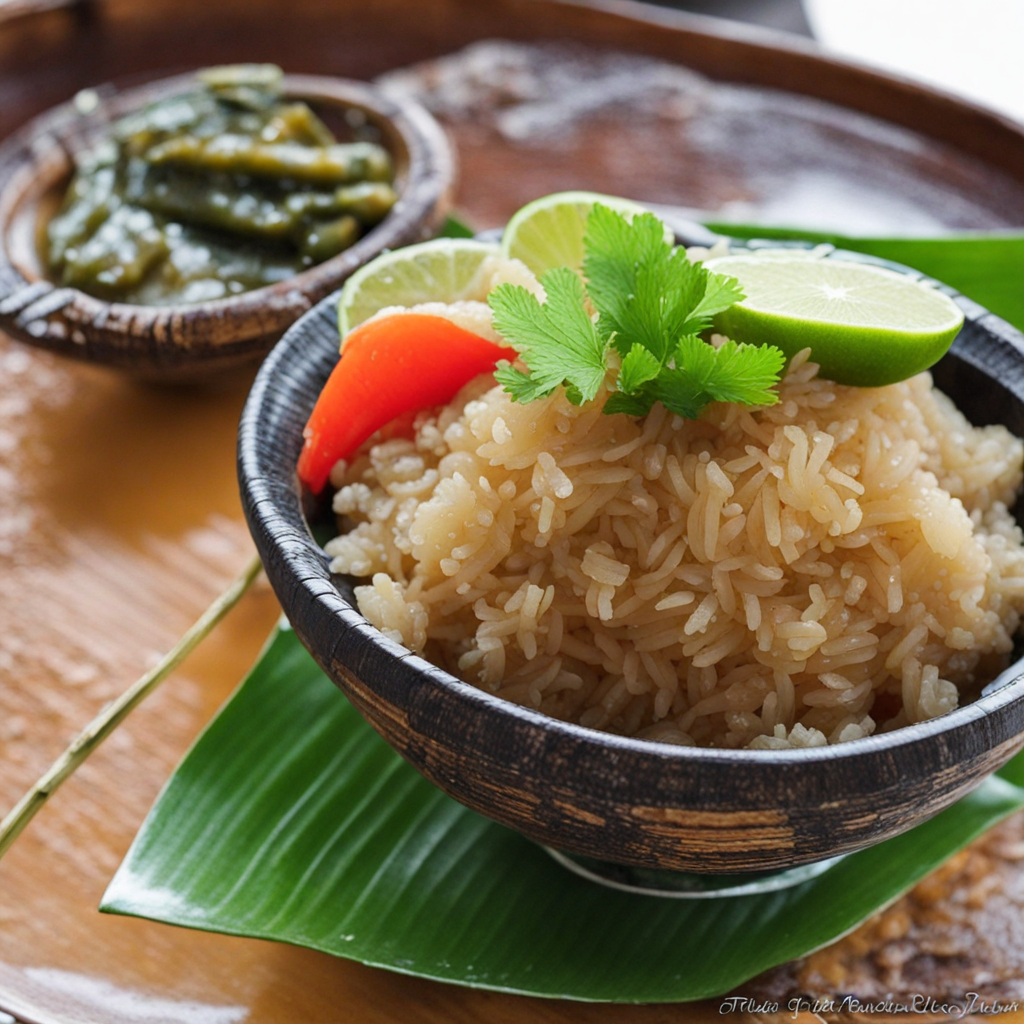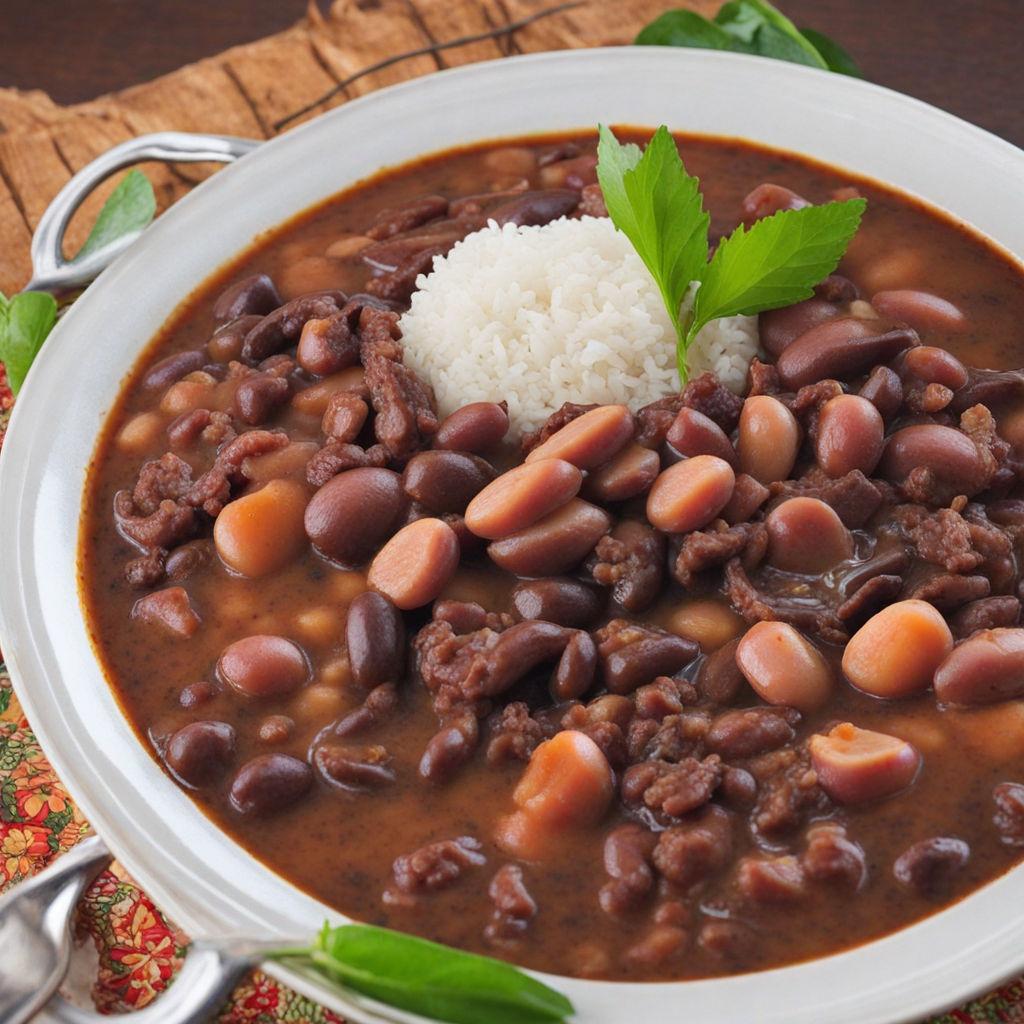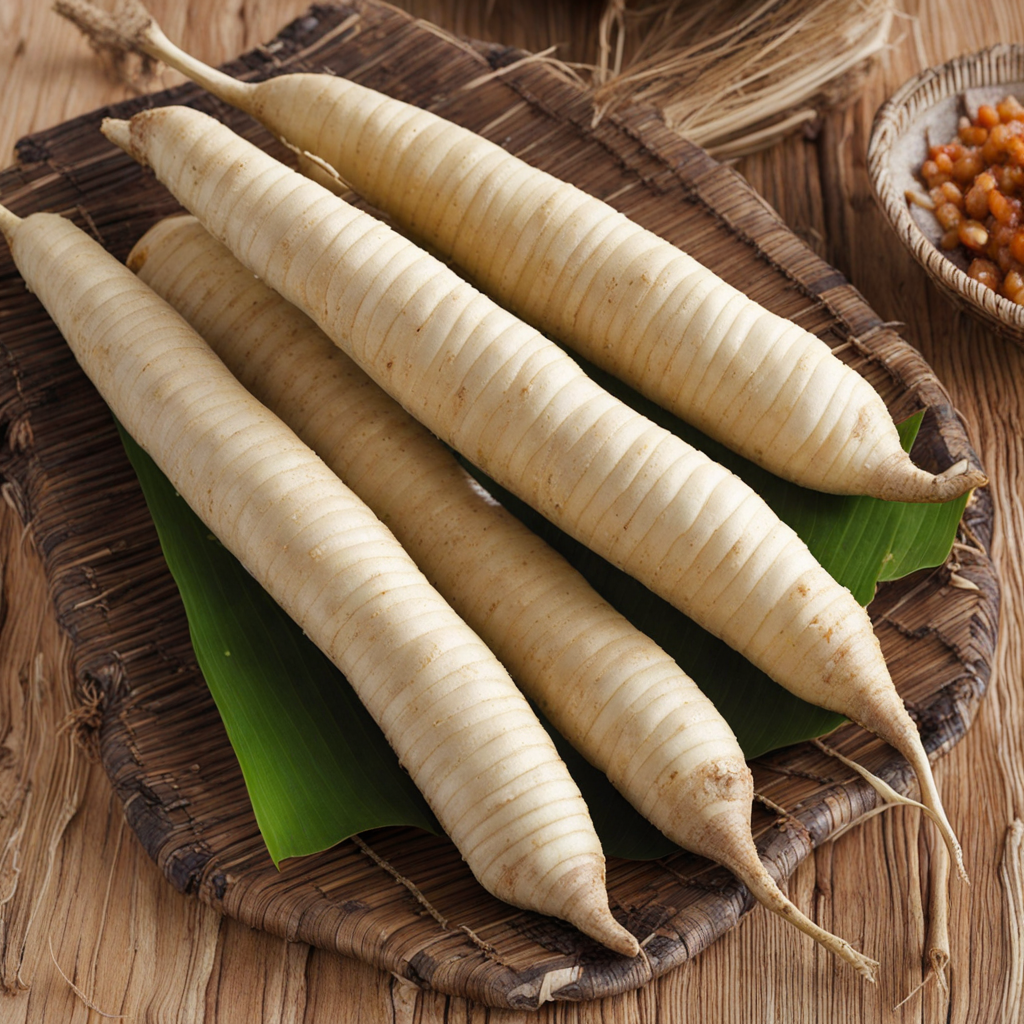Tapai
Tapai is a traditional fermented food from Timor-Leste, made primarily from glutinous rice or cassava. The process begins with cooking the rice or cassava until soft, after which it is allowed to cool. Once at the right temperature, a special starter culture is added, which typically includes the fungal fermentation agent known as 'ragi'. The mixture is then wrapped in banana leaves and left to ferment for several days, resulting in a delightfully sweet and slightly tangy flavor profile that is both unique and refreshing. This fermentation process not only alters the taste but also enhances the nutritional value of the ingredients used, making it a wholesome option for those exploring new culinary experiences. The final product of Tapai is a soft, sticky texture that can be enjoyed in various ways. Some people prefer to eat it straight from the wrapping, savoring its natural sweetness, while others may pair it with fresh fruits or sweeteners like honey for added flavor. In Timor-Leste, Tapai is often served at celebrations and gatherings, emphasizing its cultural significance and communal enjoyment. The aroma of the fermented rice or cassava, coupled with its distinctive taste, creates an inviting experience for anyone looking to try something different. What makes Tapai particularly fascinating is its versatility; it can be enjoyed as a snack, dessert, or even as an accompaniment to savory dishes. Each region in Timor-Leste may have its own variation of the recipe, leading to a diverse range of flavors and textures. Whether you are a seasoned foodie or a casual eater, discovering Tapai offers a unique glimpse into the rich culinary traditions of Timor-Leste, inviting you to embrace the art of fermentation and the joy of shared meals.
How It Became This Dish
The History and Cultural Significance of Tapai in Timor-Leste Tapai is a traditional fermented food that holds a significant place in the culinary landscape of Timor-Leste, an island nation nestled in Southeast Asia. This delicacy, often made from glutinous rice or cassava, encapsulates not just the taste of the region but also its deep-rooted traditions, social connections, and historical evolution. To understand Tapai, we must delve into its origins, cultural significance, and how it has developed over time. #### Origins of Tapai The origins of Tapai can be traced back to ancient agricultural practices in Southeast Asia, where fermentation was a common method of food preservation. In Timor-Leste, the production of Tapai is believed to have begun with the cultivation of rice and cassava, staples in the local diet. The word "tapai" itself is derived from the Malay term for fermented food, and the practice likely spread from the Malay Archipelago into the islands of Indonesia and East Timor. The indigenous people of Timor-Leste have long relied on fermentation to create not just food but also beverages, with Tapai serving as both. Traditionally, the process involves cooking the starch source, allowing it to cool, and then inoculating it with a special starter culture known as "ragi." This culture can be a mixture of mold and yeast, and it plays a crucial role in the fermentation process, transforming the simple ingredients into a tangy, slightly alcoholic dish. #### Cultural Significance Tapai is more than just a food item; it is a staple in the social and cultural fabric of Timorese life. In Timor-Leste, Tapai is often associated with important ceremonies and celebrations. It is commonly served at weddings, religious events, and community gatherings, symbolizing hospitality and community bonding. The act of sharing Tapai with family and friends is a gesture of goodwill and a means of reinforcing social ties. In many rural communities, the production of Tapai is often a communal activity. Families and neighbors come together to prepare the ingredients, ferment the mixture, and enjoy the fruits of their labor. This collaboration fosters a sense of unity and shared responsibility, underscoring the importance of community in Timorese culture. Furthermore, Tapai is closely tied to agricultural cycles, with its preparation often aligning with harvest times. The availability of glutinous rice or cassava determines when and how much Tapai can be made. In this way, Tapai serves as a reflection of the agricultural rhythms of Timor-Leste, highlighting the relationship between food, nature, and community. #### Development Over Time The evolution of Tapai in Timor-Leste can be viewed through several lenses: social, economic, and political. Historically, the production of Tapai was mostly confined to rural areas, where traditional methods and recipes were passed down through generations. However, the late 20th century brought significant changes to Timor-Leste, which impacted the production and consumption of Tapai. Following Indonesia’s invasion of East Timor in 1975 and the subsequent struggle for independence, the country underwent a period of turmoil. The war disrupted agricultural practices and led to food shortages, making traditional foods like Tapai even more significant for cultural identity and resilience. During this time, Tapai became a symbol of resistance and unity among the Timorese people, representing their heritage amidst adversity. After gaining independence in 2002, Timor-Leste experienced a cultural renaissance, leading to a revival of traditional foods, including Tapai. As the nation sought to reclaim its identity, local food practices gained prominence, and Tapai was celebrated not only for its taste but also as a representation of Timorese cultural heritage. In recent years, Tapai has also found its way into modern culinary practices. Chefs in urban areas and restaurants have begun to experiment with traditional foods, incorporating Tapai into contemporary dishes. This modern twist has helped to elevate Tapai’s status beyond a simple fermented staple to an element of gourmet cuisine, allowing it to reach a broader audience. #### The Preparation of Tapai The process of making Tapai is an art form that requires skill and patience. Traditionally, glutinous rice is soaked overnight, then steamed until fully cooked. Once cooked, it is allowed to cool before being mixed with the ragi starter culture. The mixture is then placed in a container and covered with a cloth to allow fermentation to occur. This process can take anywhere from one to several days, depending on the desired taste and texture. The final product varies in flavor, ranging from sweet to slightly sour, and can be enjoyed in various ways. In some regions, Tapai is eaten as a dessert, while in others, it is paired with savory dishes. Some people even consume it as a beverage, mixing it with water and consuming it fresh or allowing it to ferment further for a stronger alcoholic taste. #### Conclusion Tapai is a unique and cherished food in Timor-Leste, embodying the country's rich cultural heritage and agricultural practices. Its origins, rooted in ancient fermentation methods, have evolved alongside the country’s tumultuous history, serving as a symbol of resilience and community. As Timor-Leste continues to carve out its place on the global stage, Tapai remains a testament to the enduring power of traditional foods in shaping identity and culture. In an increasingly interconnected world, the future of Tapai looks promising. As more people discover the flavors of Timor-Leste, the potential for Tapai to grow in popularity outside its native land is immense. Whether enjoyed at a festive gathering or as a gourmet dish in a fine restaurant, Tapai will continue to tell the story of the Timorese people, their history, and their unwavering spirit.
You may like
Discover local flavors from Timor-leste







